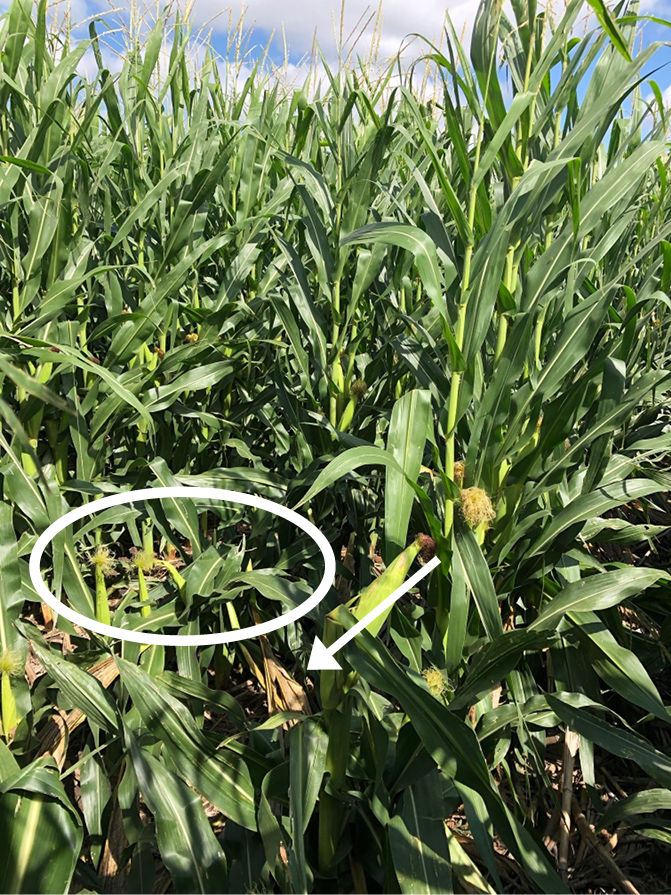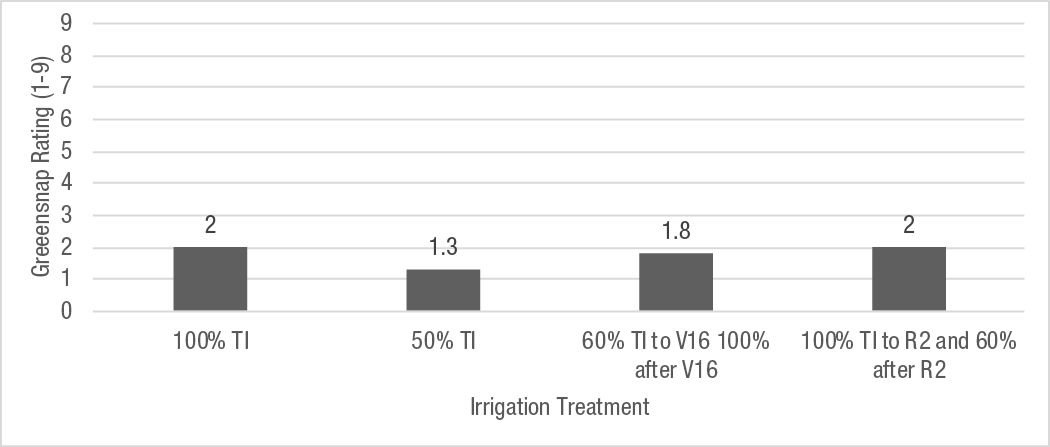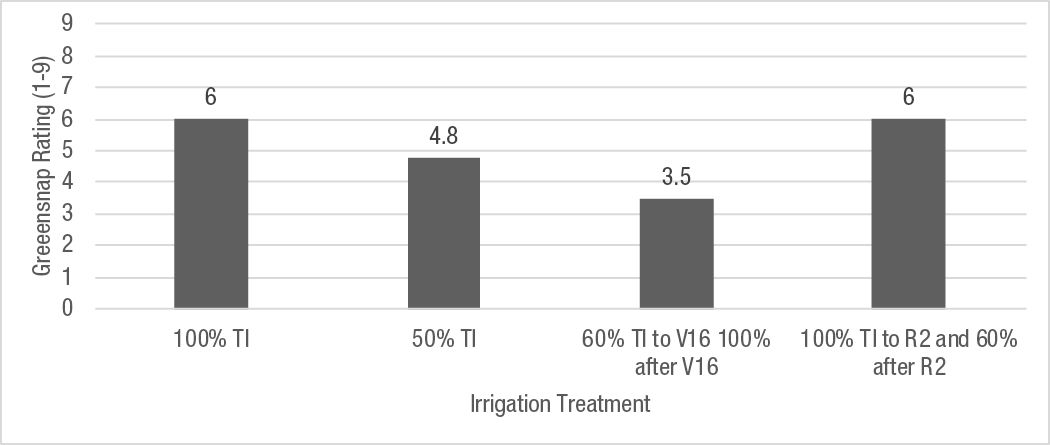Limited Irrigation Water and the Impact on Greensnap
January 15, 2021
TRIAL OBJECTIVE
Greensnap is a challenge in the western corn belt because severe thunderstorms, often with high winds, are common throughout the growing season.
The thunderstorms frequently coincide with the period of rapid growth between V12 and R1 which is around two weeks prior and up to silking.
Many factors can influence greensnap including corn product, temperature, growth stage, growth rate, fertility, wind speed, herbicide applications, fungicide applications, and even soil moisture. This variability can cause parts of one field to greensnap unacceptably, and another to be okay under seemingly similar conditions.
This trial investigates the impact of early season irrigation management on greensnap.
RESEARCH SITE DETAILS
| Location | Gothenburg, NE |
| Soil Type | Hord silt loam |
| Previous Crop |
Soybeans |
| Tillage Type |
Strip-tillage |
| Planting Date | 5/7/2020 |
| Harvest Date | 11/6/2020 |
| Potential Yield (bu/acre) |
270 |
| Seeding Rate (seeds/acre) |
36,000 |
The study was setup in a split-plot design with four replications. Irrigation treatments were the whole plot, and corn products were the sub-plot.
Thirty corn products were planted in four irrigation environments that simulate different irrigation strategies.
All corn was sprinkler irrigated with a linear machine that had variable rate irrigation (VRI) installed to allow variable applications to the trial.
Table 1 contains details of the irrigation strategies used.
The growing season was relatively dry. Irrigation was started on 7/4/20 and terminated on 9/22/20 with a total of seven passes.
This trial was not managed to full irrigation because of some mechanical challenges with the irrigation system. Full irrigation would have been 10 inches on the season, and this trial was managed at about 70% of full irrigation on the year.
A severe thunderstorm on 7/10/20 caused corn to greensnap in the trial.
Fertility applied was 70 lb phosphorus/acre, 15 lb sulfur (S)/acre, and 27.5 lb nitrogen (N)/acre banded with strip till on 4/7/20, 100 lb N/acre applied with stream bar on 4/23/20, and 15 lb S/acre and 90 lb N/acre applied with 360 Y-DROP® applicators on 6/26/20.
Weed control consisted of a pre-emergent application of 3.0 oz/acre Balance® Flexx herbicide plus 2.0 pt/acre Harness® herbicide plus 1 qt/acre atrazine 4L and 1 qt/acre Roundup PowerMAX® herbicide on 5/1/20 followed by a post-emergent application of 3.0 oz/acre Laudis® herbicide plus 3 pt/acre Warrant® herbicide and 24 oz/acre Moxy® herbicide on 6/10/20.
Greensnap ratings were taken and corn grain yields were collected at harvest. Greensnap ratings were taken on a 1-9 scale with 1 representing no plants snapped and 9 representing 90% to 100% of plants snapped in the plot.

UNDERSTANDING THE RESULTS
After the 7/10/20 storm, greensnap was observed in the trial and severe in some treatments (Figure 1).
Analysis showed a lower greensnap rating in the irrigation treatments where irrigation water was more limited early in the growing season (Table 2).
Irrigation applications were made to all treatments one day prior (7/9/20) and six days prior (7/4/20) to the thunderstorms. The treatments with higher snap ratings had 2 inches of irrigation applied in the week before the storm, and the treatments with lower snap ratings received 1 inch (50% Trial Irrigation) and 1.2 inches (60% Trial Irrigation to V16 and 100% after V16).
When looking at specific products, the pattern of more greensnap with higher early irrigation water application and less greensnap with lower early irrigation water application held true across corn products that had low, moderate, and high potential for greensnap (Figures 2, 3, and 4).
The treatments with lower irrigation water were likely water stressed at the time of the storm and had decreased turgor pressure which can lower the risk of greensnap.





KEY LEARNINGS
Greensnap is a challenge to corn production everywhere, but it is one that is especially common on the Great Plains.
The best managed and best looking corn fields seem to be the ones most affected by greensnap in a given event, and there are many factors that can enhance it.1
Irrigation supplied to the crop can be one of those factors where doing a better job of meeting plant requirements can cause higher greensnap amounts.
When scouting fields after a storm, pay attention to environmental factors that may have increased corn greensnap vulnerability. Don’t write off a corn product if there is greensnap in one environment because variation in the growing environment can play a large role in what happened in one environment. Instead, look across multiple environments and discuss product greensnap tolerance with your local Bayer seed representative.
Source:
1White, M. and Pope, R.O. 1998. Green snap opinions vary. Integrated Crop Management News. 2283. http://lib.dr.iastate.edu/cropnews/2283.
1021_R12_20